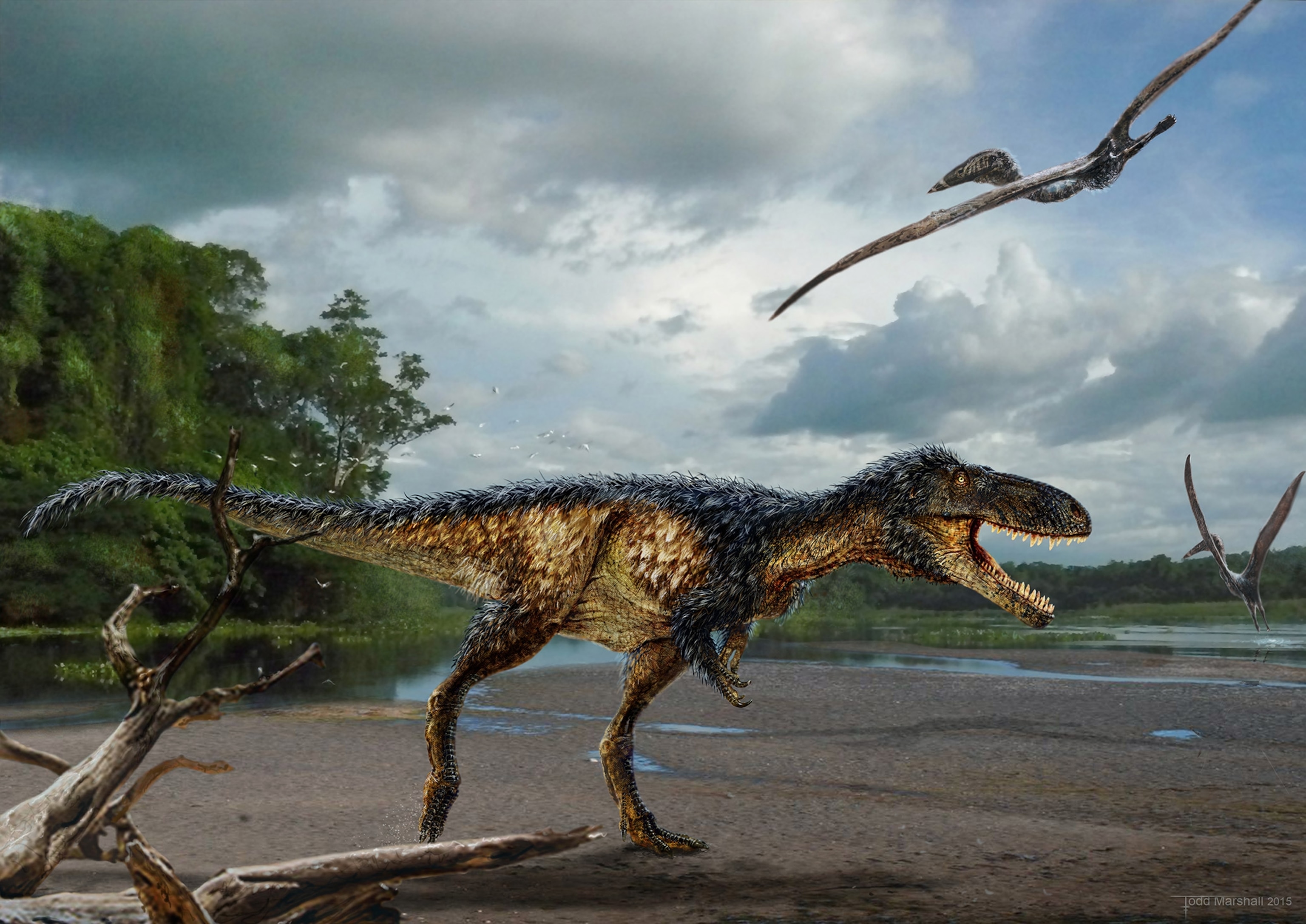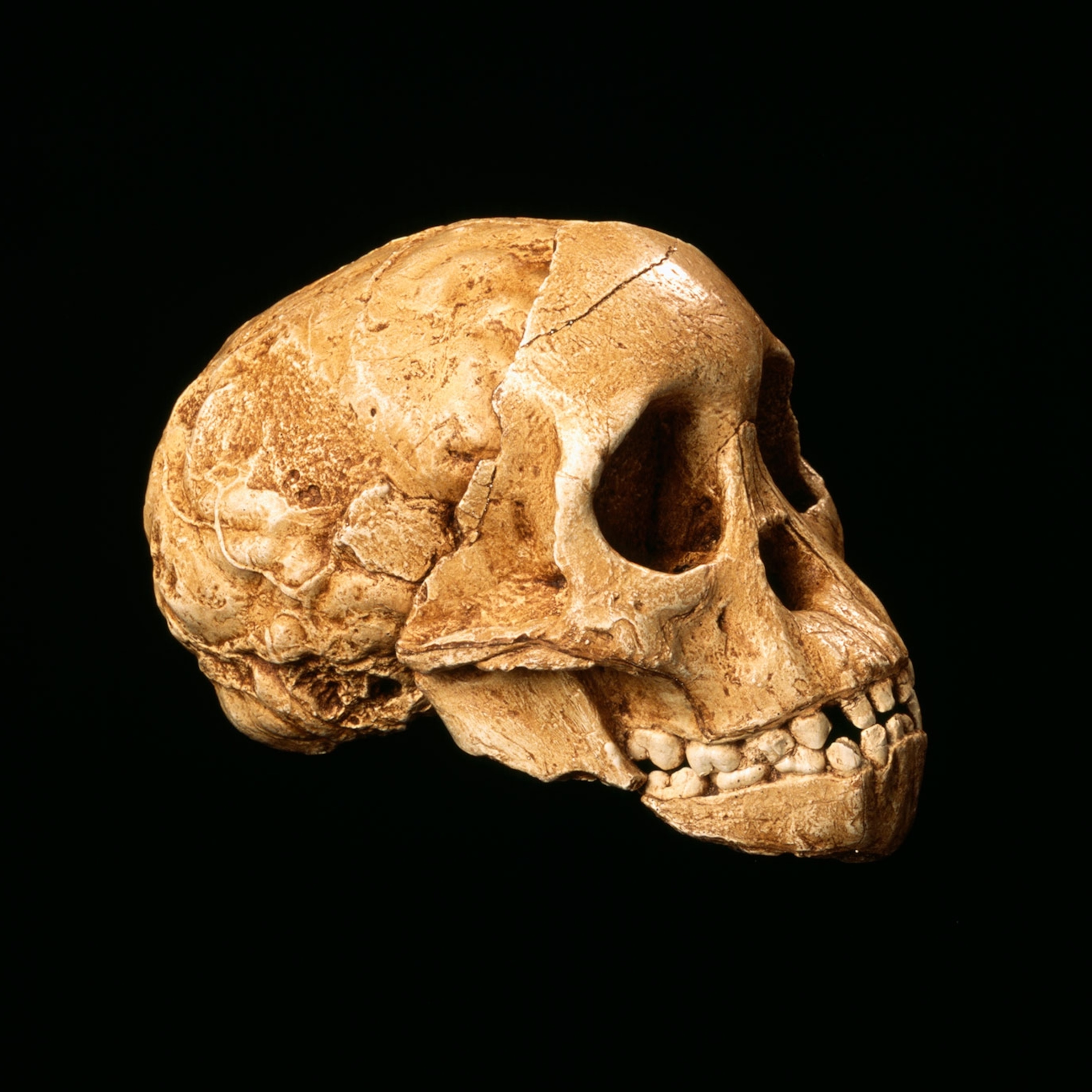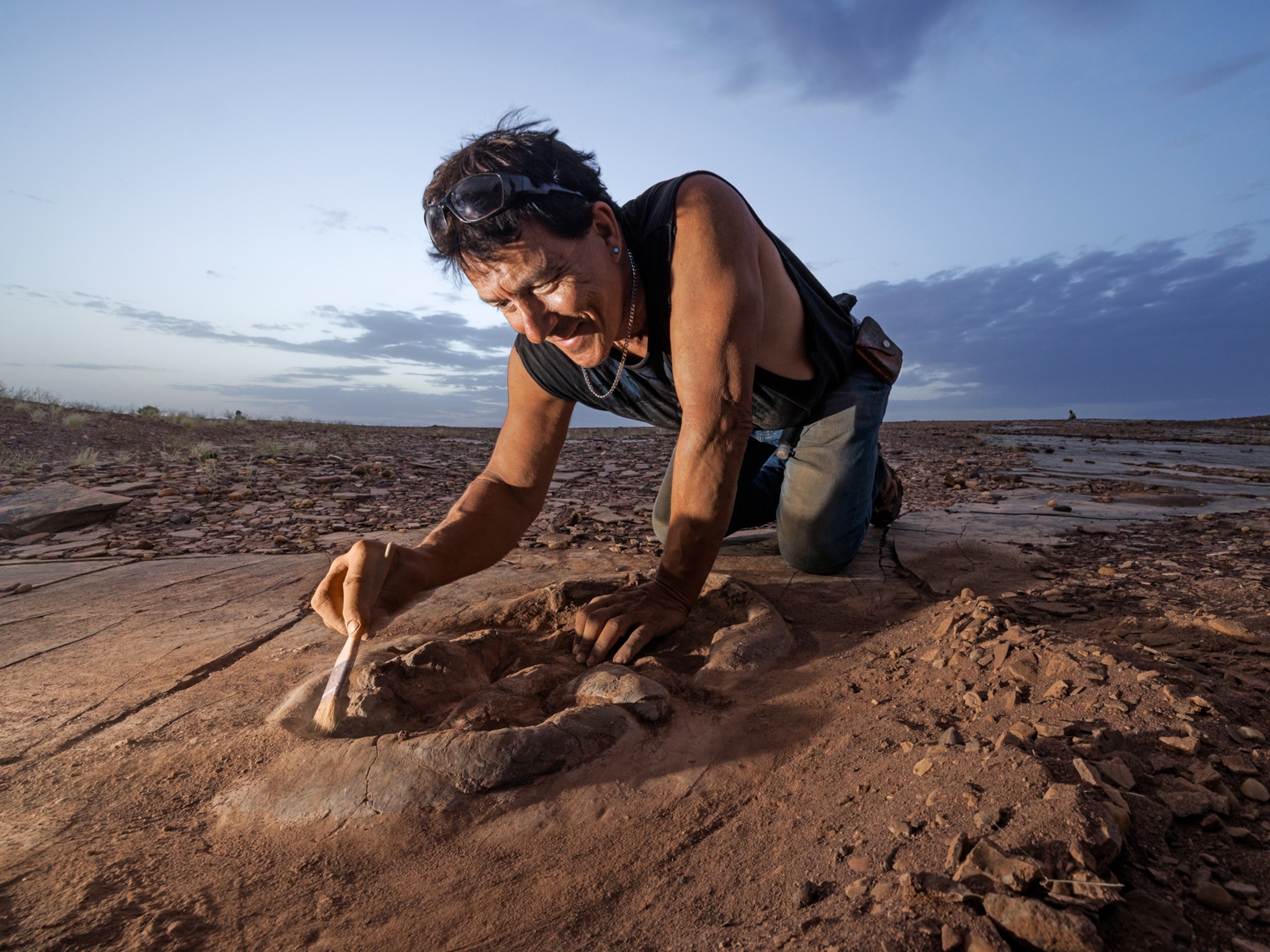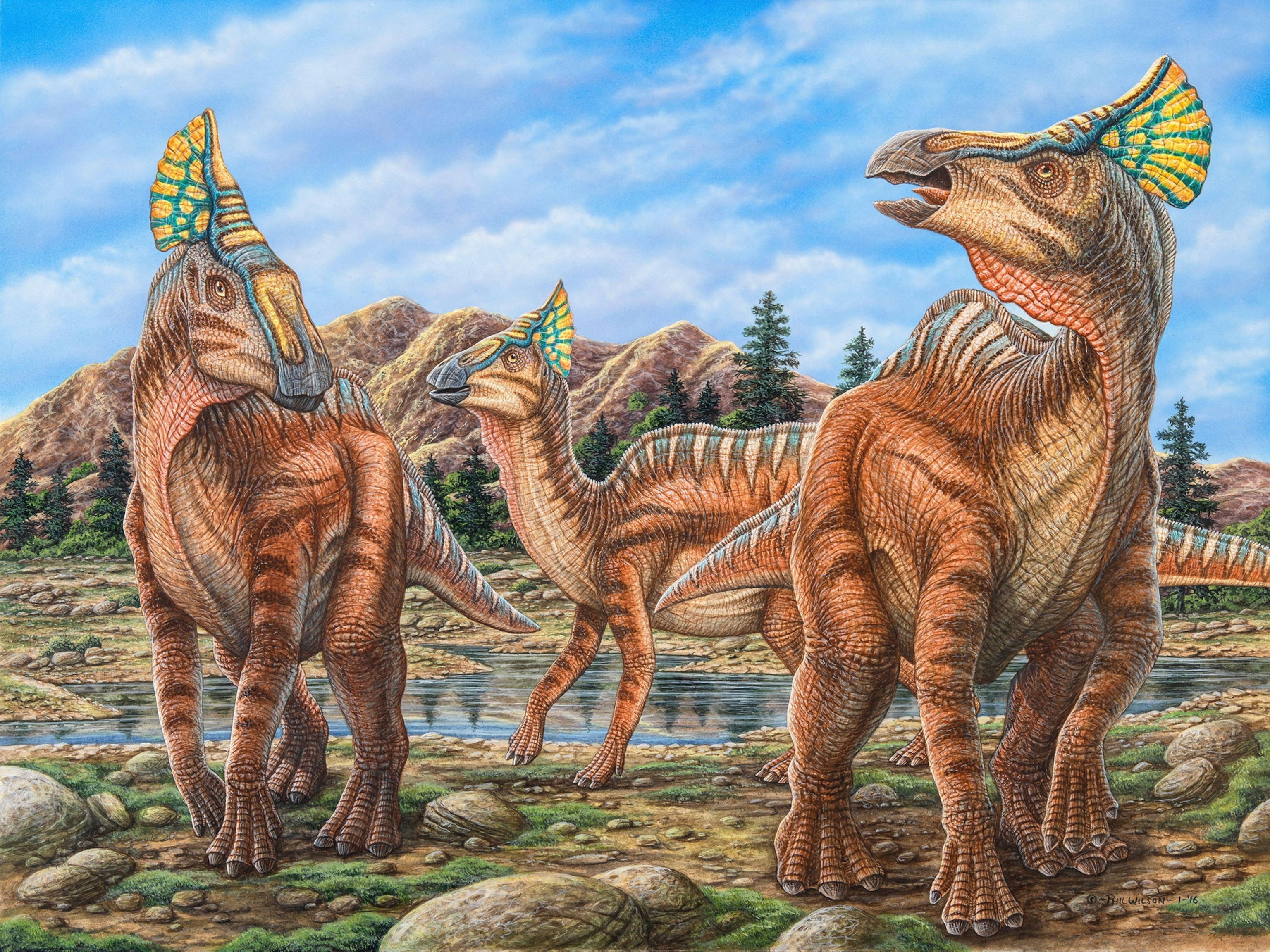
‘Missing Link’ in Tyrannosaur Family Tree Discovered
The horse-sized dinosaur fills in a massive gap in T. rex’s family history.
A new species of tyrannosaur adds to the fearsome group of dinosaurs to which Tyrannosaurus rex belonged. Scientists found its 90-million-year-old bones in the harsh deserts of Uzbekistan.
The newly described species, Timurlengia euotica, is an oddball. The horse-sized dinosaur resembles earlier, smaller tyrannosaurs. Yet its large brain and advanced ears—their outlines preserved in a skull fragment—mirror those of later tyrannosaurs like T. rex.
“Timurlengia is truly a curveball,” says Thomas Carr of Carthage College, who wasn’t involved with the study. “I had to readjust the way I thought about tyrannosaurs. It’s a weirdo.”
A Growing Mystery
The new species, described Monday in the Proceedings of the National Academy of Sciences, could also help untangle one of the most frustrating questions in dinosaur evolution: How and why did tyrannosaurs get so big?
Tyrannosaurs first appear in the fossil record about 170 million years ago, and until about 100 million years ago, they scampered about on the ecological margins, some no bigger than dogs.
But by the late Cretaceous—about 80 million years ago—tyrannosaurs such as T. rex had ballooned into some of the biggest, most intimidating land predators ever to walk the planet. Head to tail, they could get as long as a bus, and their enormous heads and powerful jaws could generate bites with nearly 13,000 pounds of force.
“The funny thing is that T. rex is such a pop star,” says Lawrence Witmer of Ohio University, who wasn’t involved with the study. “None of us can even remember a time when we didn’t know about Tyrannosaurus. But the reality is that how [it] evolved is a bit of a mystery.”
What’s more, T. rex wasn’t just big. It was gifted.
“Contrary to what people learned in the first Jurassic Park movie, T. rex had acute senses,” says study co-author Hans-Dieter Sues of the Smithsonian National Museum of Natural History. “It clearly had very keen eyesight, a spectacularly keen sense of smell, [and] keen hearing.”
Its killer senses stemmed from its impressive brain: T. rex’s two olfactory lobes—the brain regions devoted to smell—were each the size of a grapefruit. And its long, looped ear canals helped it hear the low-frequency sounds emitted by distant prey’s footsteps.
“It was sort of a superpredator,” says Sues.
But paleontologists have struggled to pin down how tyrannosaurs got brainier and brawnier, largely because the fossil record between 100 and 80 million years ago, when small tyrannosaurs would have evolved into giants, is so sparse.
“At that particular point in time, sea levels were very high,” says Sues. “We just didn’t have the record from the land animals.”
Digging for Answers
The fall of the Soviet Union, however, presented researchers with a new opportunity: the Bissekty Formation, a site in what’s now Uzbekistan with fossils between 92 and 90 million years old. Soviet paleontologist Lev Nesov had investigated the site since the mid-1970s, but as the old regime dissolved, Nesov, his Ph.D. student Alexander Averianov, and colleague J. David Archibald of San Diego State University planned a major excavation of the site—one that the National Geographic Society eventually would help fund in 1997 and 1998.
The team worked in difficult conditions. “The highest temperature I remember was 43 degrees Celsius (109 degrees Fahrenheit) in the shadow,” wrote Averianov, a co-author of the study. Sues recalls that it once got so hot inside his tent, his toothpaste’s fluoride stripes separated out, liquified by the intense heat.
In 2004 the team found an intriguing bone lump the size of a grapefruit. It was part of a braincase, which would have anchored the dinosaur’s neck muscles and protected its brain and ear canals.
The braincase remained with Averianov for ten years, stored in a cardboard box in the Zoological Institute of the Russian Academy of Sciences, until tyrannosaur expert Steve Brusatte saw it in 2014.
“When I looked at it, it struck me really quickly that this looked like a tyrannosaur braincase,” says Brusatte, of the University of Edinburgh. “Not exactly T. rex, much smaller; the same bones in a T. rex would be bigger than a basketball.”
Detailed CT scans proved Brusatte right. For instance, they revealed that Timurlengia, like later tyrannosaurs, had remarkably long inner ear canals, which would have endowed it with superb low-frequency hearing, hence its species name euotica, Greek for “well-eared.”
However, the braincase was short—more in keeping with Xiongguanlong, an early tyrannosaur—and lacked some of the deep recesses and knobs in later tyrannosaurs like T. rex.
“The braincase was really the Rosetta stone,” says Sues, “because it showed that this animal had the same basic brain structure of the later T. rex but had primitive brain structure, as well.”
Other bone fragments all pointed the same direction: to a new tyrannosaur about the size of a horse, seemingly caught between the early and late tyrannosaurs in terms of age, size, and sensory ability.
Brains, Then Brawn?
The finding suggests that tyrannosaurs first evolved their distinct senses and brain structure, and then grew in size much later. In fact, tyrannosaurs' smarts may have made it easier for them to take over for the allosauroids, an earlier group of big-bodied, carnivorous dinosaurs that went extinct some 94 million years ago. “It’s the head-first mode of evolution,” says Sues. “The brains [are] for the operation, and then you develop the bulk.”
But the team’s work is far from over, given that they have only one surefire Timurlengia specimen: the braincase. “It’s like trying to solve a murder with one clue,” says Brusatte. “More than any other experiment or analysis, we just need more fossils.”
In the meantime, all paleontologists knows for sure is that Timurlengia was no sensory slouch.
“I think all we can say is that they weren’t as dumb as their predecessors,” says Carr.
Follow Michael Greshko on Twitter.








